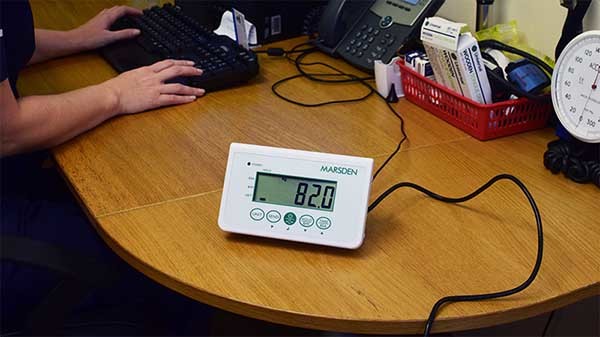How Has COVID-19 Changed Telehealth?

Before the global coronavirus pandemic, Telehealth services were not considered widely used by patients and healthcare professionals in the UK.
However, the introduction of social-distancing, self-isolation and shielding to prevent the spread of COVID-19 has transformed the way both the NHS and private healthcare services operate and provided an opportunity for telehealth and the remote exchange of data.
According to the Medical Group Management Association (MGMA), in late March 2020, around ‘97% of healthcare leaders reported expanding telehealth access amid COVID-19’. There are many benefits to establishing a Telehealth service, for both patients and healthcare professionals, such as lower costs, improved access to care and the reduced spread of infection due to fewer patients needing to visit the premise or waiting in GP receptions or hospital waiting rooms.
Telehealth providers have witnessed an increase in demand for their products and services, and the coronavirus outbreak has confirmed telehealth as a vital tool for managing public health and reducing the strain on healthcare services during a global pandemic. It is now highly likely that, when adopted by the majority due to its convenience, Telehealth services will continue to be accessed when the current pandemic is over.
Telehealth During COVID-19
Doctors and Nurses in the UK have experienced disruption across their daily work routines and have had to adapt to a new way of working due to the coronavirus pandemic. Many are using online consultation and virtual visit services, as well as telephone appointments and other Telehealth services, to share vital data regarding a patient's condition and provide care.
‘Ten Years of Change in One Week’
In The New York Times, London GP Dr. Sam Wessely claimed that when it came to the application of Telehealth during COVID-19, “We’re basically witnessing 10 years of change in one week,” as “It used to be that 95 percent of patient contact was face-to-face: You go to see your doctor, as it has been for decades, centuries. But that has changed completely.” Before the virus, it had been reported that only 1% of around 340 million annual visits to primary care health professionals were made up of video appointments.
In the past, innovative Telehealth services have faced resistance due to some patients and professionals feeling apprehensive regarding the potential lack of face to face appointments and in-depth diagnosis. This, of course, is understandable, and patients who may be seriously concerned about their health should still make a physical appointment.
However, during the coronavirus, the need for remote appointments has been great, with many patients health needs being handled by nurses and doctors as virtual visits. These are carried out either online or over the phone, leaving medical facilities and waiting rooms free for emergencies and more serious health concerns.
In the future, the increased application of Telehealth services should result in more efficiency in the practice, quicker responses and diagnosis and a greater level of care to all patients due to a more streamlined and effective process. In turn, this revolution in healthcare should equal happier patients due to improved access to services and less travel time, especially for those who require regular check-ups.
Remote Patient Screening in Care Homes
As the elderly are high-risk of becoming severely ill with coronavirus, the introduction of remote patient screening in care homes is an effective way of monitoring their health and sharing the information wirelessly to the clinician without the need for physical contact.
Some UK care homes have been introduced to a health screening solution. These remote health monitoring stations allow residents to have their regular check-ups without the need of a doctor or nurse from their clinic, hospital or GP surgery being present, which could reduce the transmission of COVID-19.
The benefits of this Telehealth service mean that remote monitoring could potentially save the NHS thousands, and is likely to remain in place post-coronavirus.
Professional Telehealth Scales at Marsden
As mentioned, Telehealth services can often involve the remote exchange of data, such as weight, and it’s increased application during the coronavirus pandemic has helped to revolutionise both patient care and the day-to-day work routine of healthcare professionals.
At Marsden, we offer a wide range of Telehealth scales and scales with Bluetooth and wireless connectivity to allow for the careful monitoring of a patient’s health and the instant transfer of this information to a healthcare services device or central database.
Our scales allow patients to weigh themselves at home and avoid making a journey to the hospital or their local GP and therefore reducing the risk of being infected with COVID-19.
Wireless Scales With Bluetooth/Wifi Technology
Marsden Telehealth scales, with Bluetooth or WiFi technology, are capable of instantly transmitting information and data readings such as weight and BMI to an external healthcare database. This information can then be monitored for any significant changes and shared with specialists if required. This Telehealth service is ideal for patients who require regular check-ups and are currently at increased risk during the pandemic.
The Marsden range of wireless scales include robust, portable baby and toddler scales, high capacity portable scales with BMI, column scales, and scales equipment for wheelchair users, with a choice of Bluetooth or WiFi technology.
For more information regarding our convenient and effective Telehealth wireless scales and how to integrate the service within a healthcare environment, call Marsden on 01709 364 296.
Further Reading
Discover the benefits of telehealth for patients and healthcare professionals.
Find out more about how remote health screening has reduced contact in care homes during COVID-19.
If you’re interested in purchasing one of Marsden’s Telehealth scales and allowing patients to be weighed conveniently at home, then take a look at our Buyer’s Guide.